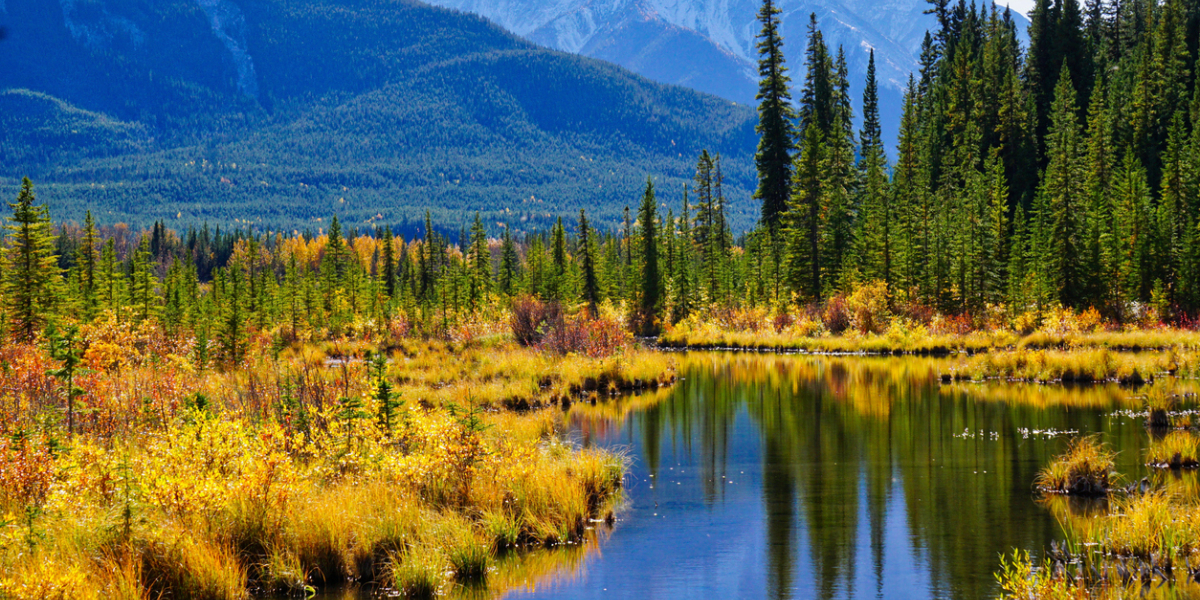
August 22, 2024
By: Elizabeth Daigle and Bianca Cecato
Nature is an expert at regulating itself. Sometimes, this process includes wildfires. Wildfires help remove dead plants from the ground, encourage new growth, and improve habitat for wildlife.
But what happens when humans enter the equation? In the last three years, close to 20 million ha of forests burned across Canada. This is eight times more than the yearly average over the last decade. In recent years, the number of wildfires has remained about the same but the total area burned has increased significantly. Higher temperatures and drier weather due to climate change have turned this restorative process into a destructive force.
But there is another amplifying factor: the loss of wetlands from land-use changes.
Today, around 440,000 ha of inland wetlands are at risk of conversion to urban encroachment and natural resource development pressures. 12,000 ha of carbon rich peatlands - wetlands composed of decaying organic matter - are disturbed by anthropogenic activities every year.
Governments across Canada struggle with the difficult task of designing policies that protect wetlands and serve a growing population. The Ontario government adopted Bill 23, otherwise known as the “More Homes Built Faster Act”, which diminished wetlands protection in an effort to speed up housing developments. In Quebec, a 2017 wetland compensation policy has slowed development projects in wetlands by requiring developers to pay to offset their impacts in wetland ecosystems. However, in practice, reports have shown that reinvestment into restoration remains a key challenge.
Wetlands are a crucial landscape to mitigate climate change and build community resilience. A landmark study on the mitigation potential of natural climate solutions by Nature United estimated that Canadian wetlands can reduce emissions by up to 15.5 Tg CO2e/year by 2030. For comparison, this is roughly equivalent to the total yearly industrial and household emissions of the province of New Brunswick.
On top of their GHG mitigating function and numerous co-benefits, wetlands can help in the fight against wildfires. Their high moisture content provides areas known as fire refugia, sheltering wildlife and vegetation, thereby increasing ecosystem resistance to the vegetation transitions that follow fire events. Fire refugia also act as physical barriers, preventing wildfire from spreading, and provide water sources for both firefighting and recovery efforts.
However, degraded wetlands actually intensify burning and can become a veritable source of fuel for wildfires. This is exacerbated in the context of climate change, which is causing water losses in wetlands and exposing more fuel layers to combustion.
Restoring wetlands by way of re-wetting and/or ditch blocking restores the water table of dried wetlands and by extension their firebreaking properties. In the case of peatlands, species of moss such as sphagnum moss are especially efficient in resisting fire due to their high water content. In cases where re-wetting is not sufficient to initiate the rapid colonization of moss, certain methods such as removing canopy cover in forested peatlands to increase light availability can help to speed up the recovery process.
Projections for this year’s wildland fire season showed that Canada’s wildfire risk will remain high. The latest wildfire tragedy in the town of Jasper, AB is estimated to have already cost $700M in insurance payouts. Last year, B.C.'s wildfire season cost another $720 million in insurance payouts, putting it in the top 10 costliest disasters in Canada. That same year, a week of wildfire smoke is estimated to have cost Ontario more than $1.2B in health impacts. Extreme wildfires also burn harvestable timber, and impose evacuations on forestry communities, resulting in the temporary closing of mills and forestry operations. Often, figures only tell part of the story and don’t reflect the human cost on affected communities.
The conservation and restoration of wetlands is a cost-effective solution in the fight against wildfires. Canadian decision makers can protect against wildfires, increase our resilience, and reduce our emissions by:
1) Prioritizing the conservation of wetlands: Not only can wetlands shield against wildfires but they can also help prevent them. Continued support of initiatives mapping our wetlands help conservation efforts.
2) Scaling investments in wetland restoration: Wetland restoration can translate into significant cost savings by avoiding catastrophic losses.
3) Integrating community resilience in land-use decision-making: Healthy wetlands increase ecosystem resilience and by extension, our own. First Nations, Inuit and Métis are important partners in conserving wetlands. The federal government has started to recognize this by bolstering Indigenous leadership in conservation initiatives. However, provincial governments must recognize the importance of wetlands beyond the current policies.
Often, the solution is natural!